Project Description
Research Highlights
National Newspapers
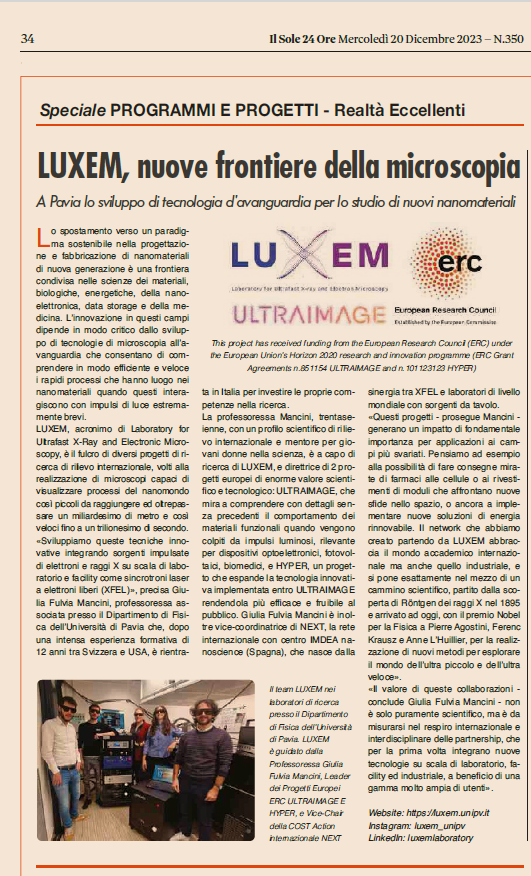
Il Sole 24 Ore
LUXEM projects ERC StG ULTRAIMAGE and ERC PoC HYPER highlighted in the Italian newspaper “Il Sole24Ore”. In the article appeared on Wednesday 20th December 2023, on “Il Sole24Ore”, Prof. Mancini explains relevance and breakthrough impact of the 2 ERC projects @LUXEM.

Il Giorno
In September 2021, Prof. Mancini invited contribution at the Stati Generali della Ricerca e dell’Innovazione 2021 of Regione Lombardia was highlighted in an article from the Italian daily newspaper “Il Giorno”.
Blogs

Ptychography – With a “P” As in “Pterodactyl”
In this invited blog from DECTRIS Dr. Charles Bevis and Prof. Giulia Mancini discuss the development of Ptychographic Coherent Diffractive Imaging and the possibilities it offers. What is ptychography? How does it work? Is it worth all the hype?
Journals & Covers
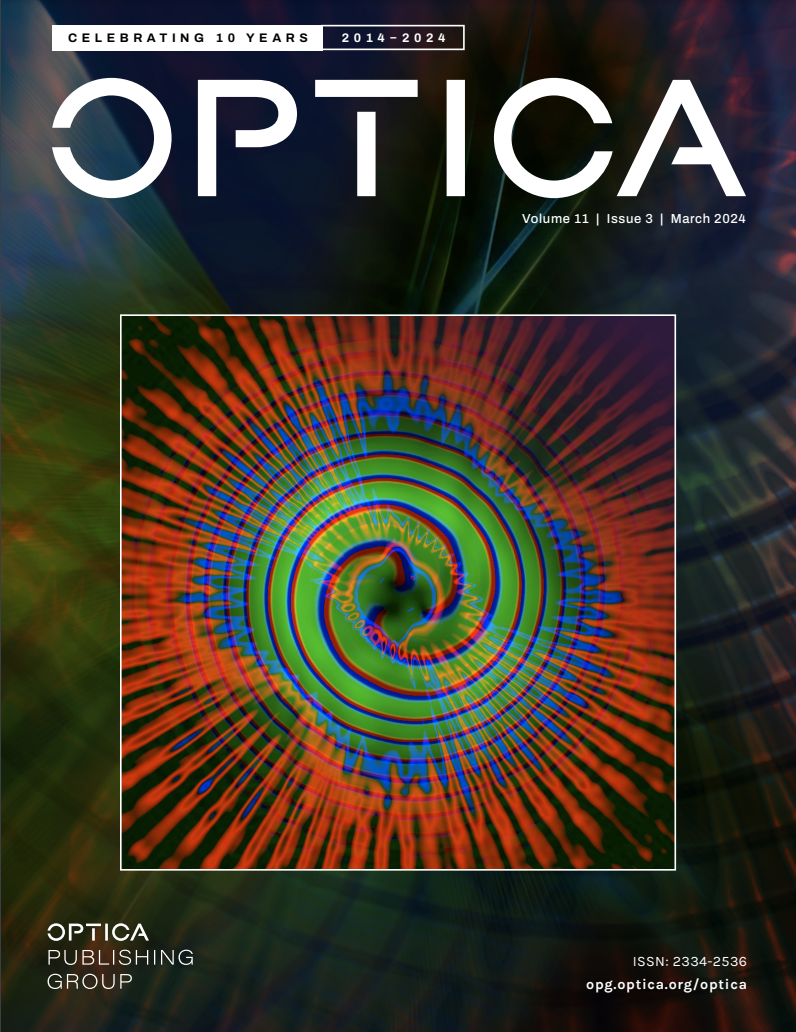
Cover – OPTICA
Vol. 11, Issue 3, pp. 403-411
Twisted-phase OAM illumination and its resulting diffraction pattern in single-shot ptychography experiments at an FEL source.
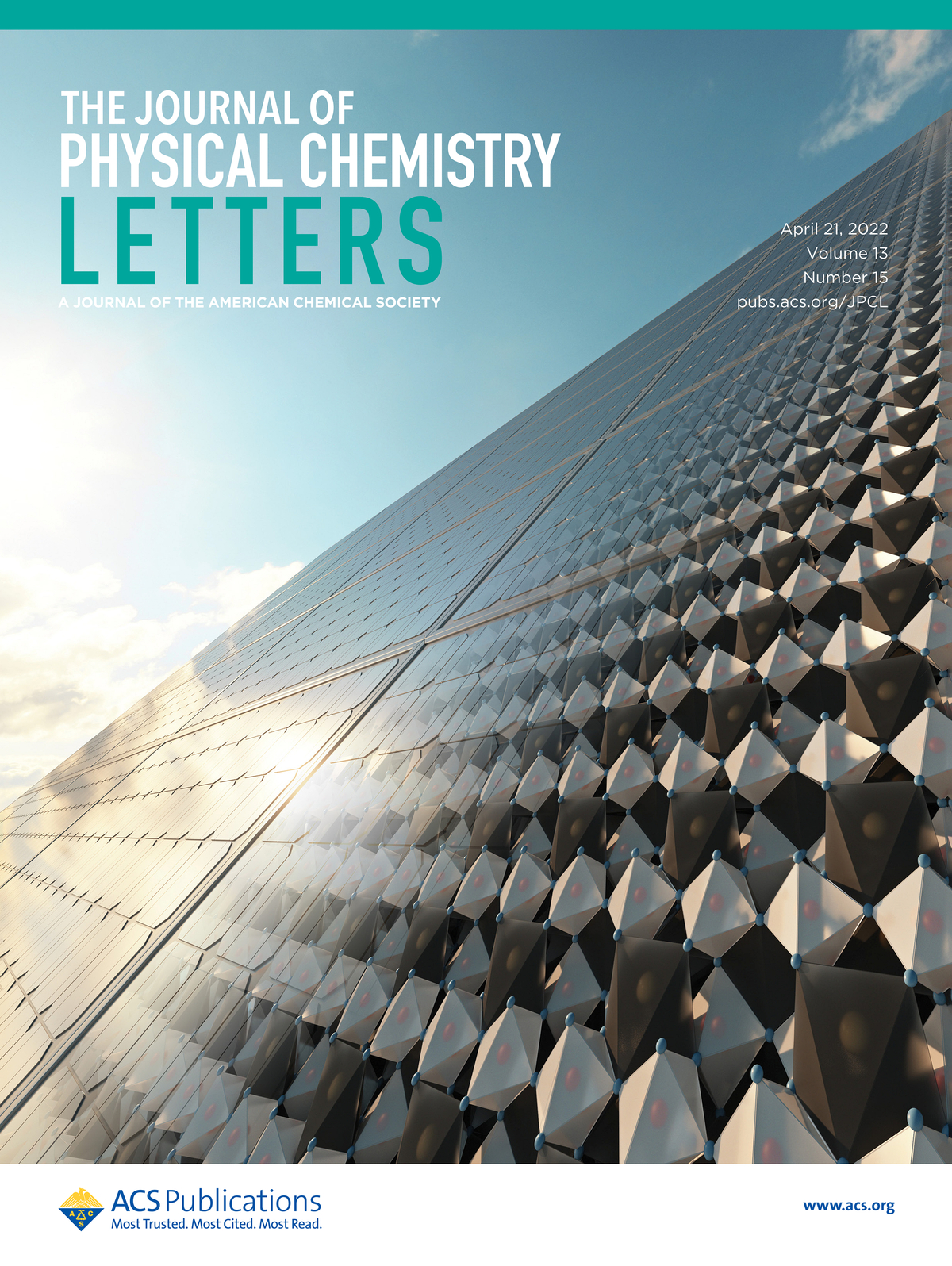
Cover – The Journal of Physical Chemistry Letters
Volume 13, Issue 14, pages 3310-3528
We provide a comprehensive atomic-scale description of the purely thermal response of lead-halide perovskites in a temperature range relevant for realistic applications. Thermal-induced changes are rationalized in terms of displacive phase transitions, which are a consequence of the phonon anharmonicity of the inorganic lattice.

Cover – Journal of the American Chemical Society
Volume 143, Issue 24, pages 8949-9276
Light activation of lead-halide perovskites induces polaronic lattice distortions, here quantified with atomic-level precision. Electron-phonon coupling drives the crystal changes, which are unlocked upon charge-carrier recombination and in the absence of thermal effects. This study clarifies the structure-property relationships in out-of-equilibrium conditions, underpinning the developments of perovskite-based devices.
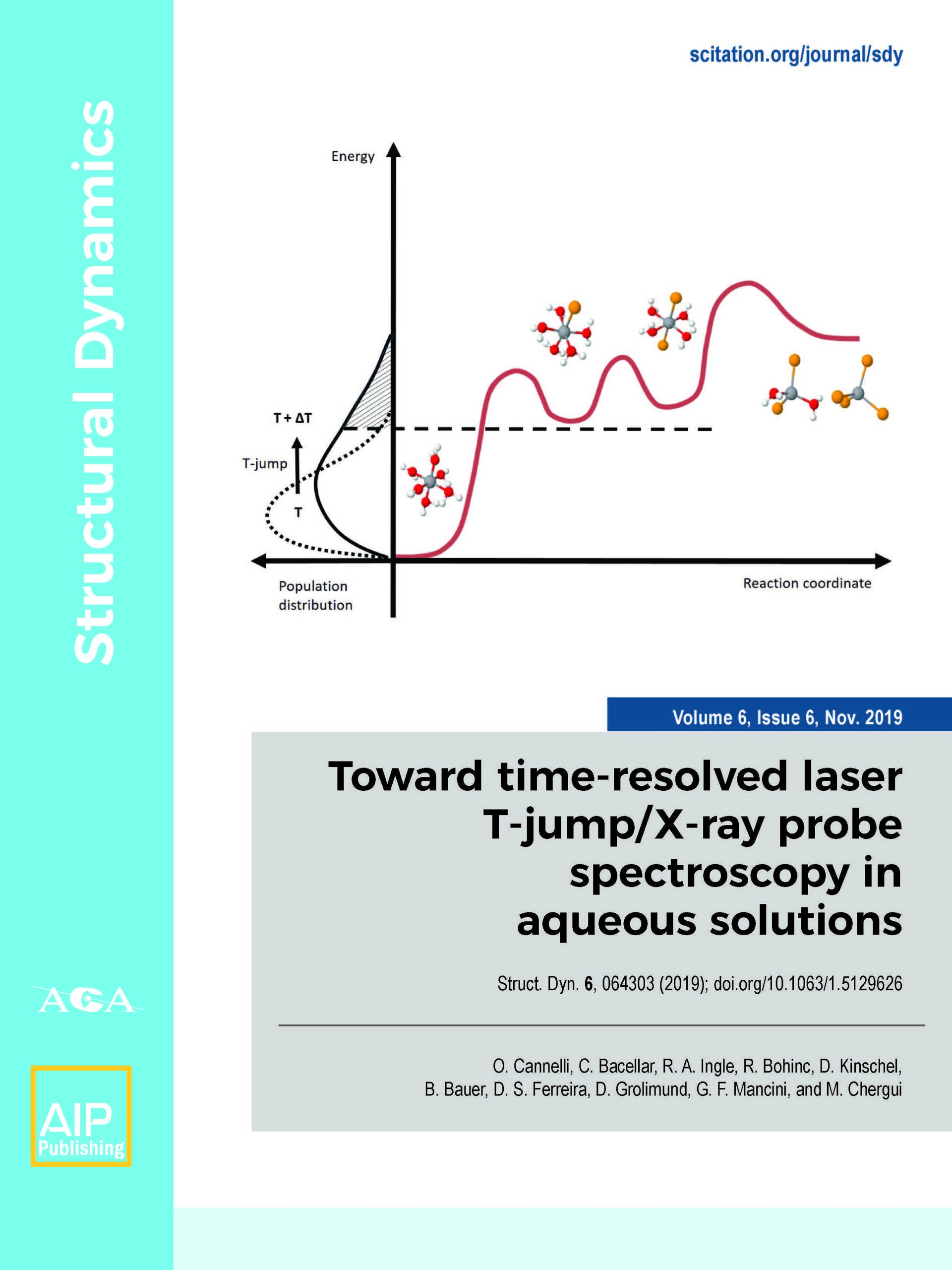
Cover – Structural Dynamics
Volume 6, Issue 6, 064303
Most chemical and biochemical reactions in nature and in industrial processes are driven by thermal effects that bring the reactants above the energy barrier for reaction. In aqueous solutions, this process can also be triggered by the laser driven temperature jump (T-jump) method, in which the water vibrational (stretch, bend, or combination) modes are excited by a short laser pulse, leading to a temperature increase in the irradiated volume within a few picoseconds.
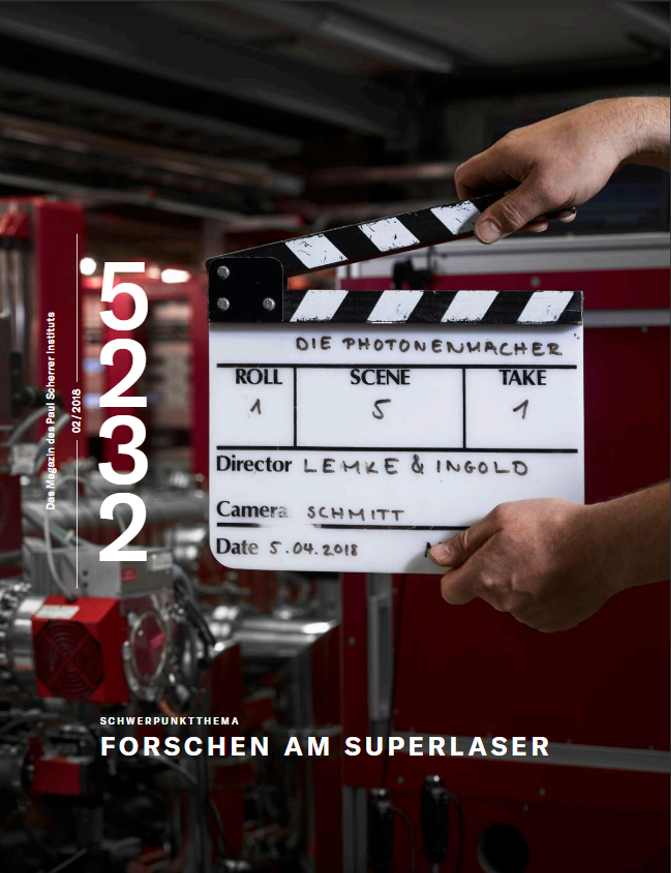
5232 – The magazine of the Paul Scherrer Institute
Fast-paced action
How do colored solar cells work and what is behind them the new brilliant mobile phone displays? The ultra-short X-ray pulses at SwissFEL cover the chemical reactions inside and should make the devices even more efficient and cheaper.
Press Releases
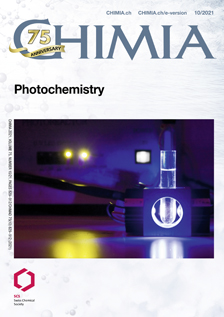
Swiss Science Concentrates – A CHIMIA Column
CHIMIA 2021, 75, No. 10
“The authors elegantly illustrate that photoinduced lattice changes in the system are due to a specific polaronic distortion, associated with the activation of a longitudinal optical phonon mode, and show that carrier recombination reversibly unlocks structural deformation at both Br and Pb sites. These results provide a thorough description of the CsPbBr3 perovskite’s photophysics, offering novel insights on the light-induced response of the system.”

Charge mobility in perovskites: a new insight
EPFL NEWS – 2021
Understanding charge mobility of the very popular lead-halide perovskite materials is crucial for their very promising photovoltaic applications. Using Time-Resolved X-ray spectroscopy, the structural deformations affecting the charge mobility, which plays a central role in solar energy conversion, have been identified and quantified with atomic precision – for the first time.

A universal structural deformation in all heme proteins
EPFL NEWS – 2020
The structure-function relationship is at the heart of biology: specific structural changes in proteins are usually associated with specific functions. This is particularly the case with hemoproteins, which have a wide range of functions, such as oxygen fixation and transport, and neurotransmission.
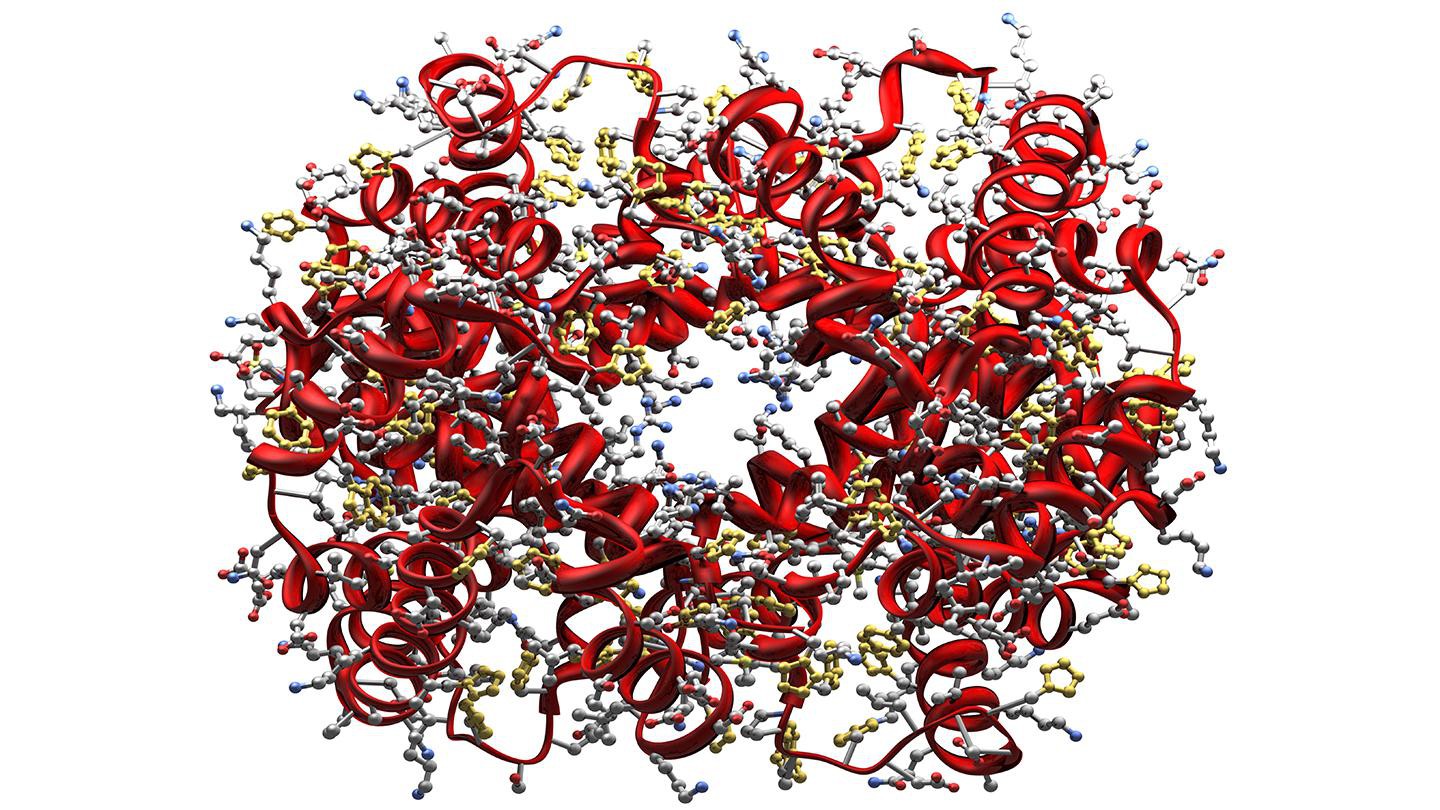
Unraveling the initial molecular events of respiration
EPFL NEWS – 2020
Respiration is a fundamental process of all living things, allowing them to produce energy, stay healthy, and survive. In cells, respiration involves what are known as “respiratory proteins”, e.g. hemoglobin in the blood and myoglobin in muscles. Physicists from Switzerland, Japan and Germany have unveiled the mechanism by which the first event of respiration takes place in heme proteins.

Research demonstrates the use of X-ray spectroscopy to study thermally-induced reactions
AIP Scilight 2019
Light-driven reactions are only a subset of chemical and biochemical processes. An extension of time-resolved spectroscopic methods to thermally driven reactions would include a much larger variety of such processes. In a new paper, Cannelli et al. demonstrate the first use of a time-resolved X-ray spectroscopy probe in a temperature jump experiment to observe structural changes over the course of a chemical reaction.

The Sharpest Images
JILA News – Laser Physics Nanoscience 2017
The world’s most powerful CDI (Coherent Diffractive Imaging) microscope at a wavelength of 13 nm. Remarkably, it contains no lenses. Rather, a nanoscale object is illuminated with coherent high-harmonic beams of extreme ultraviolet light. The scattered light is collected and used with a powerful algorithm to create an image of the object with sub-wavelength spatial resolution.
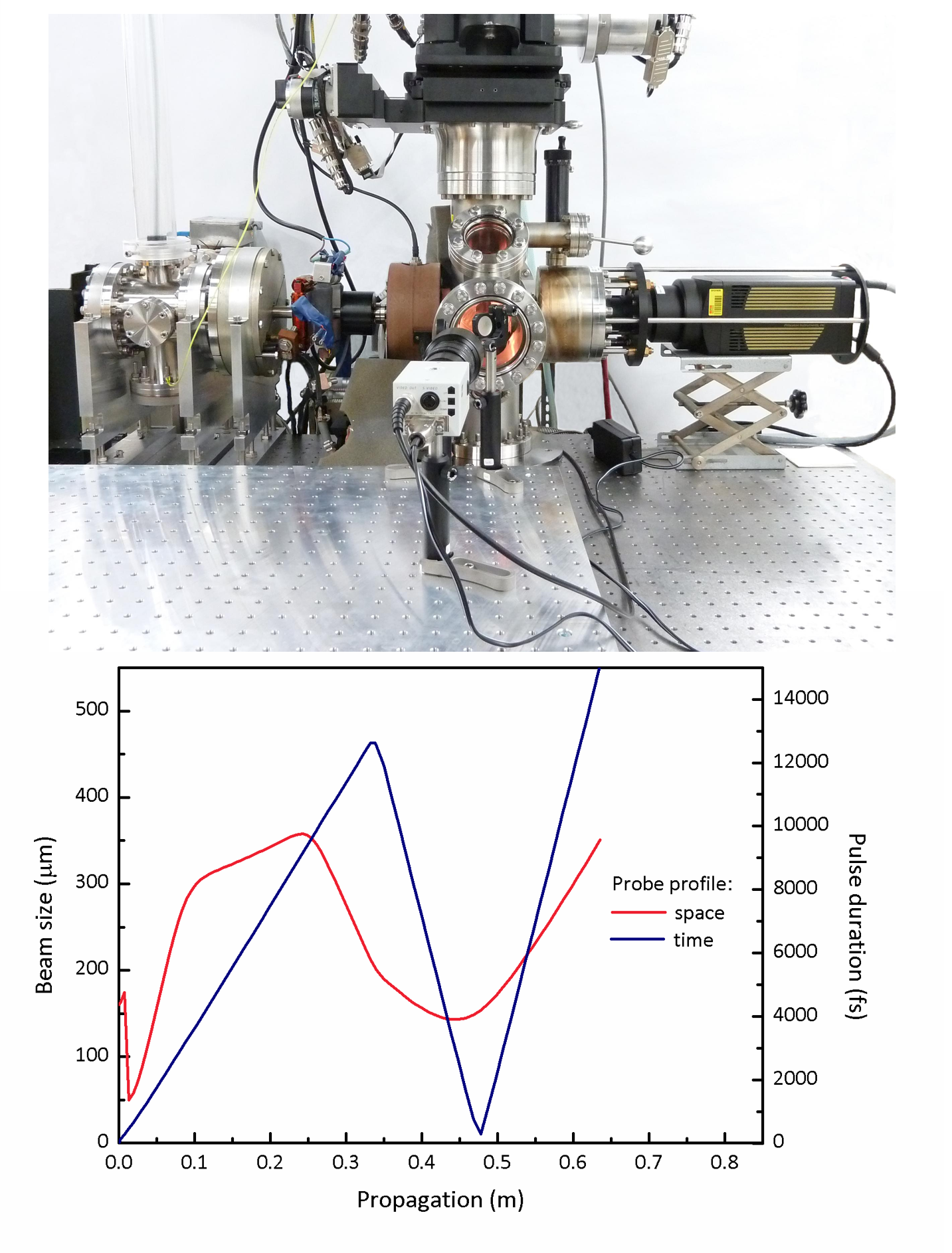
An innovative device studies gold nanoparticles in depth
EPFL NEWS – 2016
Ultrafast Electron Diffraction exploits the high sensitivity that electrons have for interacting with matter. A unique UED device developed by Giulia Mancini and Fabrizio Carbone (EPFL), in collaboration with Jom Luiten (TU/e) and Tatiana Latychevskaia (PSI), can study monolayers and very thin samples containing light elements, e.g. hydrogen and carbon. And when it comes to dense aggregates and small molecules, the small-angle time-resolved electron diffractometer can achieve the extreme sensitivity of a traditional Free Electron Laser, but at a fraction of the cost. This set-up is a reference for the implementation of new similar set-ups or the upgrade of pre-existing ones worldwide

ACS Editors’ Choice
Nano Letters – 2016
The design and characterization of functionalized nanoparticle supracrystals require atomically resolved information on both the metallic core and the external organic ligand shell. Ultrafast small-angle electron diffraction has enabled to resolve both static ordering properties and photo-induced motions of supracrystals of alkanethiol-capped gold nanoparticles, with combined fs temporal and Å spatial resolution. Key to this advance was the unique capability to retrieve the local symmetry of the real-space objects creating an electron speckle pattern by computing angular cross-correlation functions. This method, well known in the X-rays community, has been applied to the analysis of time-resolved small-angle electron diffraction patterns for the first time.
Website Highlights
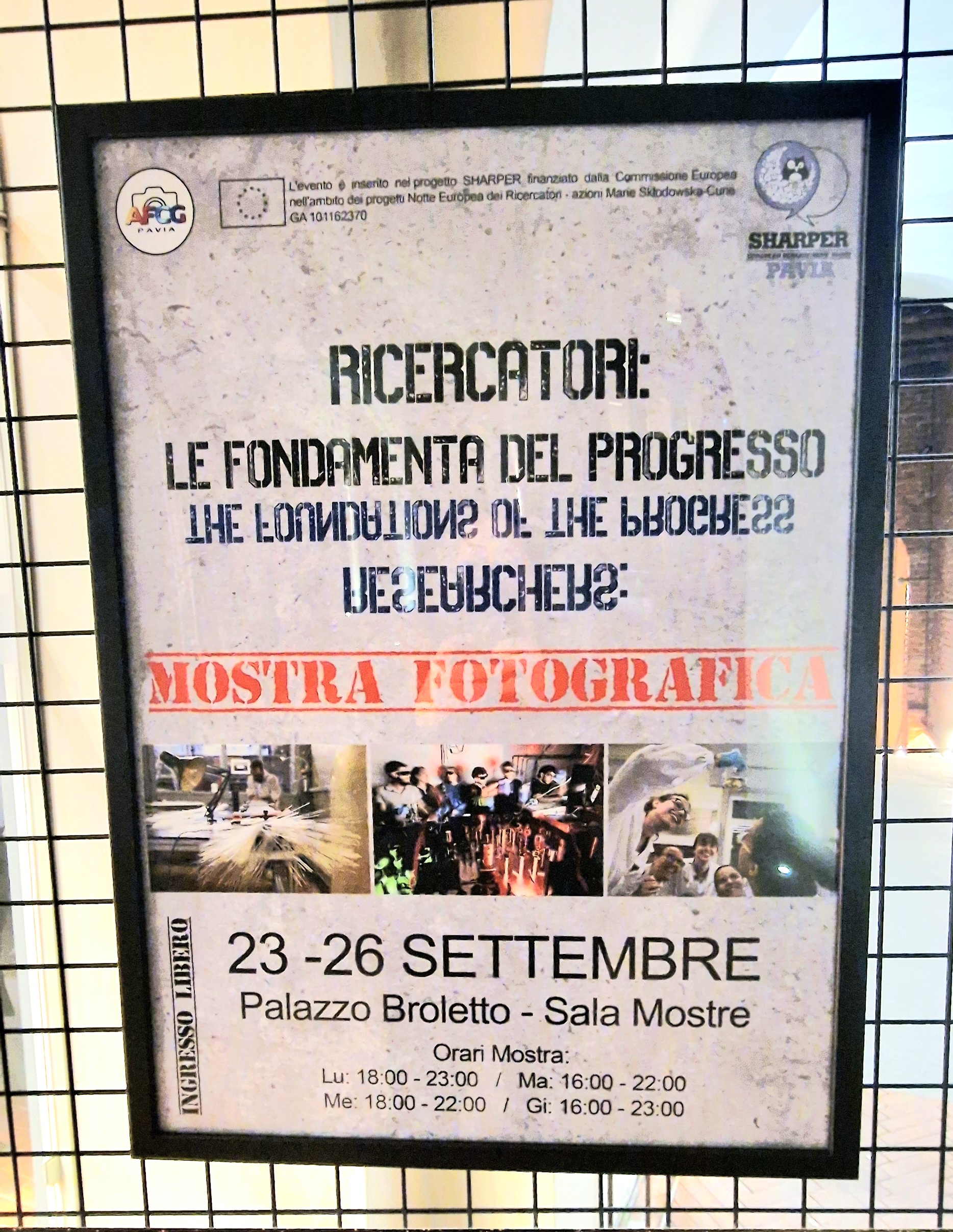
“Explore the behind-the-scenes of scientific successes by photographing those who build these successes” – ERN 2024
In September 2024, photographs of LUXEM Team and Research Facilities taken by the “Associazione Fotografica Città Giardino” were highlighted in the European Researchers Night exhibit at the Broletto municipality palace in Pavia.
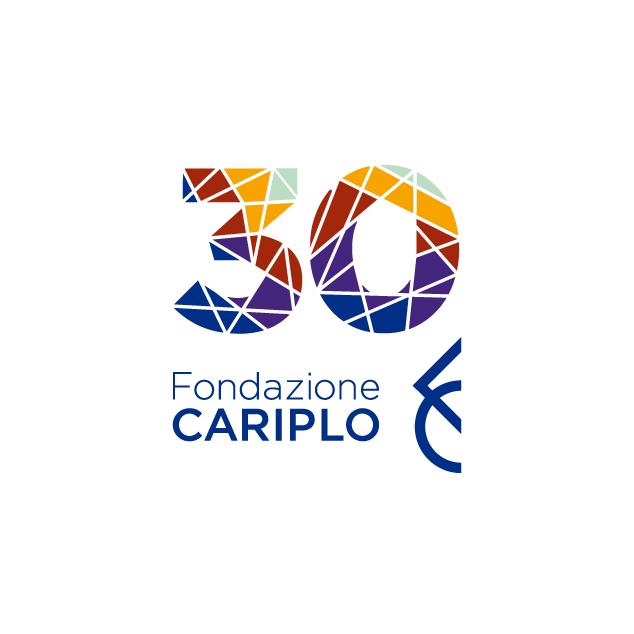
Women in Science Winners of Competitive Cariplo Foundation Calls
Prof. Mancini’s and LUXEM Research highlighted in two Stories from Cariplo Foundation: “Women in Science – Cariplo Researchers” and “Winners of Cariplo Research Grants”

Fast-moving plot
How do dye-sensitised solar cells work, and what’s behind the brilliant new mobile phone displays? The ultrashort X-ray pulses at SwissFEL reveal the chemical reactions that take place inside these devices and could help to make them even more efficient and cost-effective.


